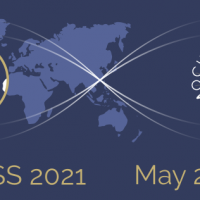Category Archives: Uncategorized
Lab members at NCRN24
By Bahman Rouhani | June 21, 2024 | Category Uncategorized
A group of lab members at the NCRN (NSERC Canadian Robotics Network) 2024 field trials. From left to right: Bahman Rouhani, Yi Wai Chow, Mingshi Chi, Markus Solbach, Tiffany Wu and Angelica Paynter.
Read MoreCurrent and former lab members at the VSS conference
By Bahman Rouhani | June 12, 2024 | Category Uncategorized
From left to right Markus Solbach, Sang-Ah Yoo, Tiffany Wu and Shira Tkacz Domb at the Vision Science Society conference.
Read More
Paria Mehrani presents “Learning a model of shape selectivity in V4 cells reveals shape encoding mechanisms in the brain” at VSS 2021
By tech | May 29, 2021 | Category Uncategorized
Venue: VSS 2021, Virtual Paper:Learning a model of shape selectivity in V4 cells reveals shape encoding mechanisms in the brain Abstract: The mechanisms of local shape information transformation from V1 to more abstract representations in IT are unknown. Studying the selectivities in intermediate stages of transformation suggest plausible mechanisms. For example, Pasupathy and Conner [1] […]
Read MoreMedia Mention: Professor John Tsotsos disproves 60-year-old Perception Theory
By tech | November 6, 2019 | Category Uncategorized
Vision researchers at York University have disproved a long-standing theory of how the human vision system processes images, using computational models and human experiments. A team led by John Tsotsos, professor in the Department of Electrical Engineering and Computer Science at the Lassonde School of Engineering, found that the human brain does not select interesting portions […]
Read MoreLassonde Undergraduate Research Awards 2019
By tech | September 19, 2019 | Category Uncategorized
Since 2015 Lassonde has offered internal summer research awards to provide research experience for undergraduate students. The LURA program is run jointly with NSERC USRA and ends each summer with a professional conference that includes poster sessions, oral presentations, networking and awards. This year Dr. John Tsotsos supervised undergraduate researcher Brittany Danishevsky. She presented her […]
Read MoreCASCON 2018 Keynote: “It Only Took 60 Years to Solve Artificial Intelligence – That Wasn’t so Hard, Was it?”
By tech | October 4, 2018 | Category Uncategorized
John Tsotsos will give a keynote talk at the 28th Annual International Conference on Computer Science and Software Engineering (CASCON 2018) in Toronto, Canada, Oct. 31, 2018. More details: https://www-01.ibm.com/ibm/cas/cascon/ Abstract: It has been 62 years since
Read MoreYulia Kotseruba and John Tsotsos Keynote Talk at 2018 AAAI Fall Symposium
By tech | October 4, 2018 | Category Uncategorized
Yulia Kotseruba and John Tsotsos are Keynote Speakers for the 2018 AAAI Fall Symposium on ‘A Common Model of Cognition’, in Arlington VA, Oct. 19, 2018. The title of the talk is “40 Years of Cognitive Architectures: Core Cognitive Abilities and Practical Applications.”
Read MoreTsotsos Lab’s recent media mentions
By tech | October 4, 2018 | Category Uncategorized
The New York Times: Artificial Intelligence Hits the Barrier of Meaning Quanta Magazine: Machine Learning Confronts the Elephant in the Room The Register: AI image recognition systems can be tricked by copying and pasting random objects jiqizhixin.com: 「房间里的大象」:让目标检测器一脸懵逼 Import AI: Fooling object recognition systems by adding more objects Twitter: : “Fan Art” tvo.org: Ontario Innovators: […]
Read MoreBDCV 2018 Keynote, “Visual Attention: Brain Mechanisms and Computational Models”
By tech | October 4, 2018 | Category Uncategorized
John Tsotsos was keynote speaker at the 1st Workshop on Brain-Driven Computer Vision (BDCV 2018), a workshop held in Association with the European Conference on Computer Vision (ECCV) in Munich, Germany, Sept. 8, 2018. The talk slides can be seen here: http://www.upcv.upatras.gr/BDCV/BDCV-eecv2018.pdf
Read MorePrevious Posts